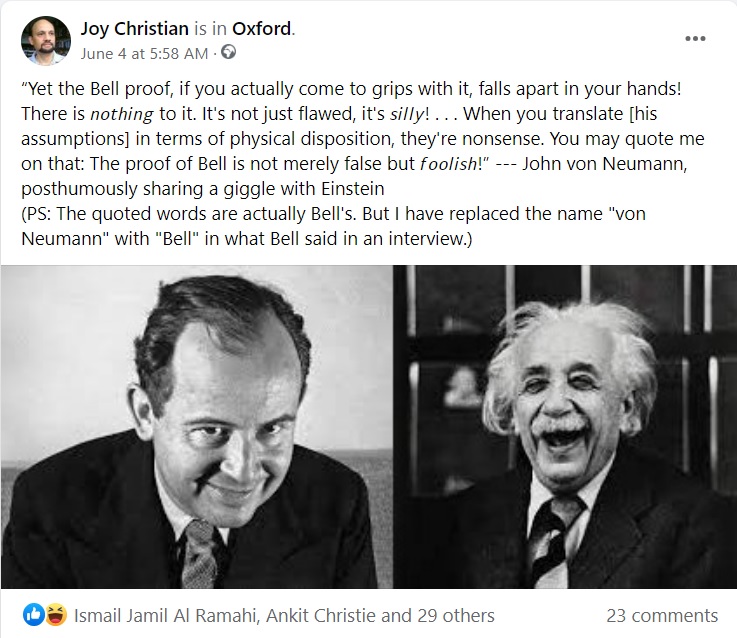I have written up a new critique of Bell’s theorem: https://www.researchgate.net/publicatio ... e_Question
It demonstrates that Bell’s theorem assumes its conclusion and thus harbors a logical fallacy (𝘱𝘦𝘵𝘪𝘵𝘪𝘰 𝘱𝘳𝘪𝘯𝘤𝘪𝘱𝘪𝘪). While Gleason’s theorem and its corollary vindicate Bohr’s view by necessitating local contextuality, Bell’s “theorem” does not necessitate non-locality or rule out Einstein’s local realism even when statistical independence of sub-experiments is respected.
Here is the abstract of my paper:
Have a Happy New Year!I demonstrate that Bell's theorem is based on circular reasoning and thus a fundamentally flawed argument. It unjustifiably assumes the additivity of expectation values for dispersion-free states of contextual hidden variable theories for non-commuting observables involved in Bell-test experiments, which is tautologous to assuming the bounds of ±2 on the Bell-CHSH sum of expectation values. Its premises thus assume in a different guise the bounds of ±2 it sets out to prove. Consequently, what is ruled out by the Bell-test experiments is not local realism but the additivity of expectation values, which does not hold for non-commuting observables in any hidden variable theories to begin with.
Joy Christian
.

